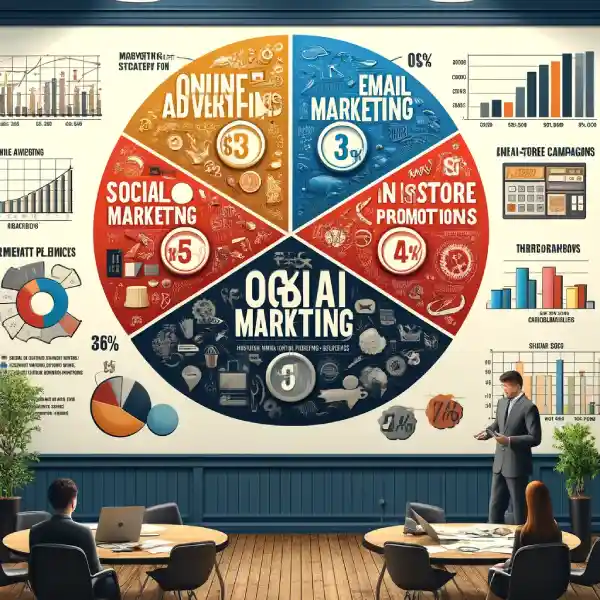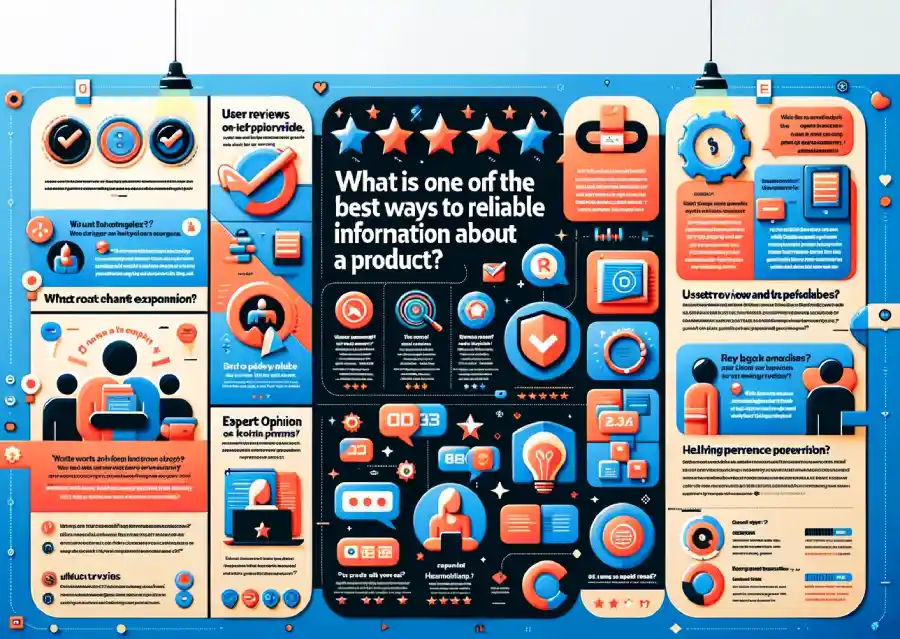
In the competitive retail industry, understanding how to allocate marketing budgets effectively is crucial. Today, we’ll explore what are five marketing strategies that retailers spend half of their annual budget on? This question sheds light on the primary tactics that consume substantial resources. We’ll also consider What are five marketing strategies that retailers use? to gain a broader view of common approaches in the sector. Additionally, we’ll answer the question: What are 5 marketing strategies? to identify essential strategies that every retailer should consider. Our discussion will delve into how much retailers typically allocate to marketing, how they select specific strategies for investment, and the risks associated with concentrating a large portion of the budget on just a few methods.
What is the marketing strategy budget?
The marketing strategy budget is the financial plan allocated specifically for marketing activities within a certain period, usually a year. This budget should cover all planned marketing and promotional activities and should be based on the company’s financial capabilities and strategic marketing goals. For a limited budget, it’s important to prioritize spending on activities that directly contribute to lead generation and sales conversion, ensuring that every dollar spent works towards achieving tangible business outcomes.
What Are Five Marketing Strategies That Retailers Spend Half Of Their Annual Budget On?
Here are five marketing strategies where retailers spend a lot of their annual budget:
- Digital Advertising
- Email Marketing
- Influencer Partnerships
- Seasonal Campaigns
- Loyalty Programs
Let’s explore each strategy in detail.
Strategy 1: Digital Advertising
Retailers allocate a significant portion of their budgets to several key marketing strategies to maximize their impact and reach. Digital Advertising plays a crucial role, encompassing tactics like Search Engine Marketing (SEM), Social Media Ads, and Display Ads. SEM targets consumers actively searching for related products, whereas social media and display ads use demographic and behavioral data to target specific groups, enhancing ad relevance and engagement.
Strategy 2: Email Marketing
Email Marketing remains a cornerstone strategy, utilizing segmentation and personalization to tailor messages directly to the consumer. Automated communications, such as welcome emails or special occasion discounts, help maintain engagement without constant manual effort. The strategy’s success is measured and refined based on detailed performance analytics.
Strategy 3: Influencer Partnerships
Influencer Partnerships leverage the trust influencers have with their followers, making it a powerful tool for organic and engaging promotion. The selection of influencers whose audience matches the retailer’s target demographic and the authenticity of the promotional content are pivotal to the success of these partnerships.
Strategy 4: Seasonal Campaigns
Seasonal Campaigns exploit periods of high consumer spending, like holidays or special events. These campaigns are thematic and integrated across all marketing channels to enhance consumer engagement and prompt purchases through limited-time offers and special promotions.
Strategy 5: Loyalty Programs
Loyalty Programs encourage repeat business by rewarding loyal customers. These programs might include points systems, tiered rewards, and exclusive offers, all designed to increase customer retention and enhance the shopping experience.
By investing in these diverse yet focused strategies, retailers effectively attract new customers and maintain a strong relationship with existing ones, fostering both immediate sales boosts and long-term brand loyalty.
What is the most effective way to do marketing when you have limited budget?
When operating on a limited marketing budget, the key is to focus on cost-effective strategies that yield high returns on investment (ROI). Here’s an effective approach to consider:
1. Define Your Target Audience
Start by clearly defining who your ideal customers are. Understanding your audience helps you tailor your marketing efforts more effectively, ensuring that you are reaching the right people with your message. This step is crucial for optimizing your spending and avoiding wasted resources.
2. Choose High-ROI Activities
Invest in marketing activities known for high ROI. These can vary depending on your industry and target audience, but some common high-ROI strategies include:
- Content Marketing: Creating and distributing valuable content (like blogs, videos, and infographics) can attract and engage your audience. This strategy helps establish your brand as an authority in your field and improves your website’s SEO, leading to organic growth over time.
- Social Media: Platforms like Facebook, Instagram, and LinkedIn offer ways to connect with customers organically or through targeted ads. Social media can be a cost-effective way to engage directly with your audience, especially when using organic strategies or small-budget, targeted ads.
- Email Marketing: This remains one of the most cost-effective digital marketing strategies. Building a list and sending out newsletters, promotions, and personalized content can yield substantial returns for a relatively low investment.
Related: How is a Post From a Social Media Influencer Different Than a Comment From a Regular Consumer?
3. Utilize Free Tools
Many digital marketing tools offer free tiers, which are particularly useful for small businesses or startups with tight budgets. Tools for email marketing, social media management, and graphic design, like Mailchimp, Hootsuite, and Canva, can greatly enhance your marketing efforts without the cost.
4. Track and Measure Performance
It’s essential to continuously monitor the performance of your marketing activities. Use analytics tools to track engagement rates, conversion rates, and other key metrics. This data will help you understand what’s working and what isn’t, allowing you to adjust your strategy and budget allocation for maximum efficiency.
5. Leverage Partnerships and Networking
Collaborating with other businesses or influencers in your industry can be a cost-effective way to expand your reach. Consider partnerships where you can co-create content, share each other’s audiences, or run joint promotions.
What percentage of their annual budget do retailers typically allocate to marketing strategies?
Marketing budget allocations vary widely among retailers but generally range from 20% to 30% of the annual budget. This percentage can fluctuate based on several factors, including the size of the business, the industry sector, competitive pressures, and overall business goals. For startups or companies in growth modes, this percentage can be even higher as they strive to capture market share and establish brand recognition.
How do retailers decide which marketing strategies to invest in?
Decision-making in retail marketing strategy investments is increasingly driven by data analytics. Retailers use data to track customer behavior, preferences, and response rates across different channels and campaigns. Market research, competitive analysis, and performance metrics from past campaigns also play crucial roles in shaping marketing strategies. Furthermore, retailers often adjust their strategies based on technological advancements and shifting consumer trends to ensure they remain relevant and effective.
What are the potential risks of spending half of the annual budget on a few marketing strategies?
While investing heavily in proven marketing strategies can be beneficial, it also comes with risks:
- Over-reliance on few channels: This can lead to vulnerabilities if those channels falter. For example, changes in social media algorithms can dramatically affect the visibility of ads and posts.
- Market saturation: Heavily investing in common strategies can lead to saturation, reducing the effectiveness of the campaigns.
- Neglect of emerging opportunities: By focusing too much budget on certain areas, retailers might miss out on emerging trends that could be more cost-effective or have a higher long-term yield.
- Flexibility: Large fixed expenses in marketing can reduce a company’s agility to respond to unexpected market changes or opportunities.
Conclusion
In the retail industry, effective budget allocation is essential for maximizing marketing impact. Retailers typically focus on five main strategies: Digital Advertising, Email Marketing, Influencer Partnerships, Seasonal Campaigns, and Loyalty Programs.
Retailers often allocate 20% to 30% of their annual budget to these strategies, guided by data analytics and market research. While investing heavily in these areas can drive sales and brand loyalty, it also comes with risks such as over-reliance on specific channels and potential market saturation. Therefore, it’s crucial for retailers to continuously monitor and adapt their marketing approaches to maintain flexibility and capitalize on emerging opportunities.




Pingback: Which of the following is not an important step in the marketing cycle? - Vlineperol
Pingback: Which marketing activity helps businesses gather information to compete effectively? - Vlineperol
Pingback: The Ultimate Guide to Marketing Plan: Types, and How to Write One - Vlineperol
Pingback: Content Marketing Powerhouse: Attract, Engage, and Guide Your Market - Vlineperol